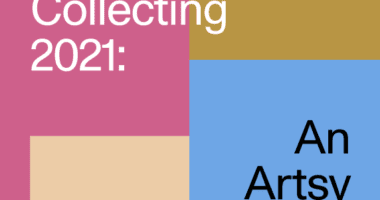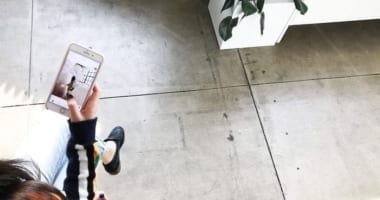About
Based in London, Anlam de Coster leads Artsy’s art fair partnerships. She is passionate about advising art fairs and gallery weekends on their digital transformation and connecting them with new audiences around the world.
Anlam has over 15 years of experience in arts management, cultural policy, and public relations, and she has worked with art museums, fairs, galleries, auction houses, and festivals.

Anlam de Coster, Artsy’s Fair Partnerships Lead.
Over the past year and a half, the art world has witnessed a fusion of the online and physical worlds. And as art fairs and galleries return to in-person events this fall, it’s becoming clear that today’s art market is now a fully hybrid one—encompassing both the digital and the physical.
We sat down with Anlam de Coster, an art industry expert and Artsy’s Fair Partnerships Lead, to hear her takes on the current fair landscape, and how a hybrid art world brings unique opportunities to galleries and fairs across the globe.
Here’s what she had to say:
Q: The art world has had to adapt to a more hybrid digital/physical experience over the past year and half. How have fairs, galleries, and collectors’ behaviors changed?
Luckily, the art market rapidly embraced digitization, and has remained resilient despite the turmoil brought on by the pandemic. Many art world players have realized that digital is not only a temporary fix—it can open a world of new opportunities and audiences, further expanding the art market and supporting more art and artists.
Fairs and galleries took this opportunity to create in-depth multimedia content and found innovative digital ways to create a meaningful dialogue between collectors and their programs. This has included expanding partnerships with online art marketplaces such as Artsy, allowing them to reach new audiences beyond their own. If art businesses can integrate their online and offline strategies in a complementary way and respond to collectors’ demands on both fronts, they can overcome the disadvantages posed by the current landscape.
As for new collectors, spending more time at home fueled their interest in collecting and accessing information online, making it easier for them to make a move on buying art. First-time buyers represent 38% of the online art market today, and they want two things: price transparency and seamless transactions, preferably on their mobile devices. At Artsy, we see that works with visible pricing are five times more likely to sell, and over 50% of our traffic comes from mobile.
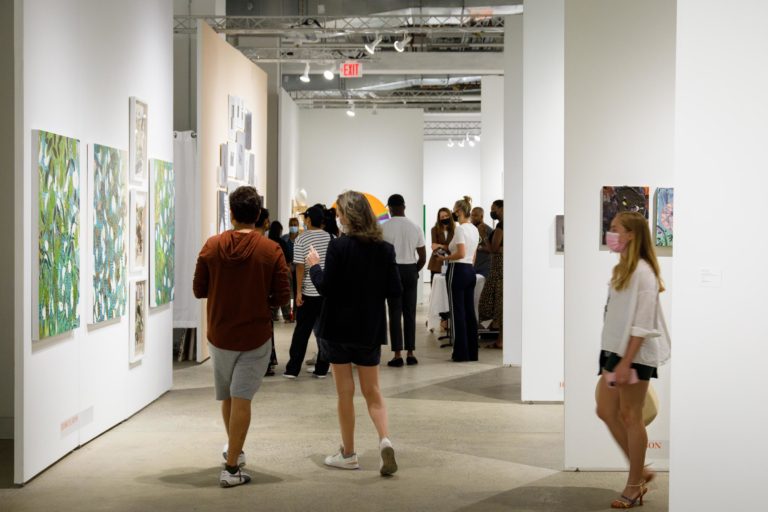
Visitors at Future Fair ©David-Willems Photography
Q: We’ve seen galleries adapt to new tools like online viewing rooms. What are the top innovation opportunities for fairs?
This is where it gets really exciting, because if art fairs start perceiving digital as an integral component of their strategy and start building a year-long online presence, it can dramatically change their business model and influence, and, in turn, help their gallery exhibitors expand the art market even further.
Fairs have incredible power as tastemakers. They have influential databases and fantastic content creation potential, but they mostly use their know-how and network for usually one single event or maybe two events in two different cities. They also have a trusted voice that can shape the careers of artists and the trajectories of galleries. So they can position themselves as more than just one live event.
In addition, the pandemic put an end to the dichotomy between physical and digital regarding all aspects of a fair—including gallery participation, collector outreach strategies, and programming. Now it’s possible to invite international exhibitors even if they can’t travel to the IRL fair, thanks to the fairs’ digital edition on Artsy or their website. Fairs can host online programming that brings together speakers from four corners of the world, while being accessible for wider audiences. And finally, they can leverage online platforms like Artsy to reach global collectors. Fairs can grow their brand beyond their existing networks of visitors who physically attend. It’s often an eye-opener for fairs to realize that the majority of online sales come from collectors who were not actively searching for their event. These collectors started their journey elsewhere, on Artsy or on Google. There is such a huge potential for fairs to engage new audiences in the digital space.
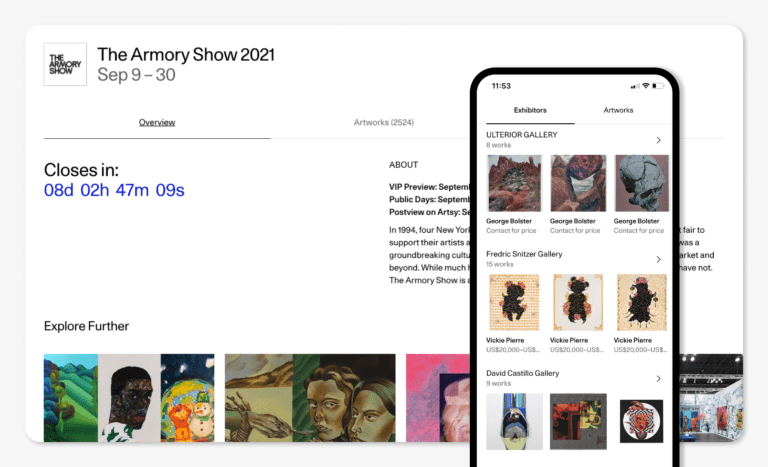
The Armory Show Fair Page on Artsy
Q: How do you think newer, younger collectors—whom we call “Next-Generation Art Collectors”—will engage with art fairs this fall and into the future?
These newer, younger collectors who have started collecting during the pandemic represent a growing portion of sales: Artsy alone adds 1,000 new buyers each month to our community of over 2 million users. And millennial collectors are the biggest spenders of the art world right now—their spending was three times the level of their older peers in the first half of 2021.
We must consider how these collectors approach the art world and how they want to collect works. And art fairs are excellent entry points for these aspiring collectors—they offer a curated selection of top works available in the market today by vetted galleries, and there’s an element of trust and excitement that comes with an art fair. The digitization of art fairs has been a game changer to widen the audience, as it’s helped attract new collectors who were maybe too afraid to approach a gallery at a busy fair booth, but who can now contact galleries online and even buy works directly on Artsy.
The other key behaviors we observe with Next-Gen Collectors are that they prefer to browse and buy art on their mobile devices, and they expect visible prices. They also like to have a bespoke discovery experience at online art fairs through filtering mechanisms, and they cross-collect across time periods and disciplines.
“If art fairs start perceiving digital as an integral component of their strategy and start building a year-long online presence, it can dramatically change their business model and influence, and, in turn, help their gallery exhibitors expand the art market even further.’’
Anlam de Coster
Q: What are the most impactful ways galleries can merge digital and in-person spaces?
I certainly hope we will see more creative ways in connecting the physical and the digital that solve the needs of both galleries and collectors. To give an example, we already have the technology on Artsy that allows collectors to buy work they see on a fair booth wall directly on their phone, on the spot, without having to go through the lengthy processes of emails, invoices, and bank transfers. I wish galleries took better advantage of these tools—such as an Artsy partnership or a simple QR code—to capitalize on the urgency a fair creates.
In September, we had multiple instances where collectors at fairs asked the galleries to list the works with our Buy Now functionality instead of Inquiry, because they wanted to buy the work immediately and securely with their credit card. Also, if you are a curator, an art advisor, or a journalist, you’re probably visiting the fair with a notebook and your phone in your hands, taking pictures, taking notes. You can do your research in advance, save the works you are interested in on the Artsy app, and better enjoy the physical experience.

Artsy QR codes at Art on Paper
Q: If a gallery can’t attend in person, can they participate virtually?
Yes, definitely—galleries can still participate in art fairs even if they cannot attend in person. To give you an example, at The Armory Show this year in New York, 50 of the 194 exhibiting galleries participated digitally only, and they were an integral part of the fair promotions. And from an Artsy collector’s point of view, they don’t differentiate between a gallery with a physical booth and only a digital booth, as their curiosity drives them to the artists and their works. This hybrid thinking can only enrich a fair’s program and offer more chances for galleries to promote their artists, especially for emerging galleries who cannot afford the hefty investment of a physical fair. It can allow both sides to have more diversified access to the art world.
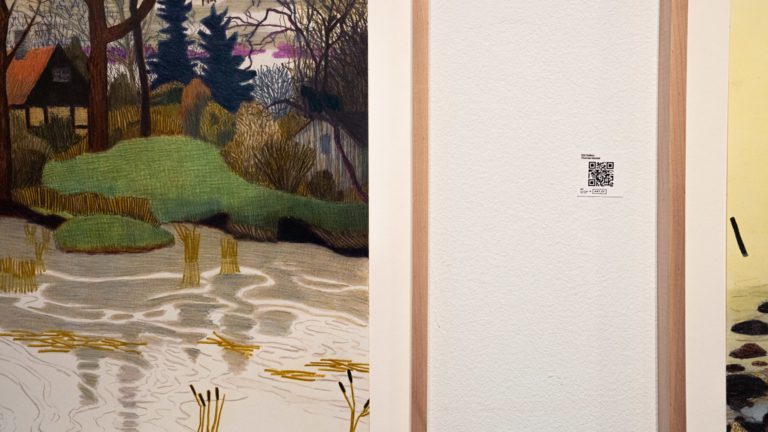
Artsy QR codes at Art on Paper
Q: What are your top pieces of advice to help galleries make the most of their participation in art fairs?
For galleries, the percentage of sales happening at in-person fairs has declined to 7% during the pandemic. As physical events come back, galleries are much more selective and strategic with their art fair participation.
However, fairs still present a fantastic opportunity for galleries to reconnect with their existing client base and meet new collectors and curators while also creating press visibility opportunities. As international travel remains limited, a hybrid online-offline approach to fair participation is essential. We have seen strong gallery sales on Artsy at September fairs across the world, and there are a few tactics that drive them:
- Don’t wait until a fair moment to activate your online strategy. Invest in building a robust and sticky online presence all year-round to ensure that collectors remain engaged with your program. The first step in that direction is being part of an online art marketplace that drives continuous digital traffic to your gallery and gives visibility to your artists.
- Leverage the momentum created by the fair by devising a communication plan across your email newsletters, press outreach, and an active social media presence. You can stand out through storytelling, quality images, and behind-the-scenes narratives that provide context to your gallery’s programming.
- Accelerate fair sales by opting in for price transparency and on-platform transactions.

